Abstract
In order to explore by immunological methods the interferon-induced cell membrane modulation, the effect of interferon in parental and monkey-mouse hybrid cells was studied in the presence of sensitized lymphocytes from isologous mice. After primary immunization to the hybrids, both parental interferons increased the lymphocyte-induced specific cytotoxicity in the same hybrid cells used as targets. In addition, a significnt increase of spontaneous lysis due to the two interferons was observed. In contrast, after secondary sensitization, in spite of the higher specific cytotoxicity induced by the lymphocytes, the same interferon preparation significantly protected the cells. These results are probably related to a greater number of sensitized effector cells after secondary sensitizationn. It is likely that, although interferon increases the affinity of sensitized T lymphocytes for the target cell membrane, in case of unsuccessful encounters, the target cells become resistant to new hits. Interferon could augment the number of such immune cells.
Full text
PDF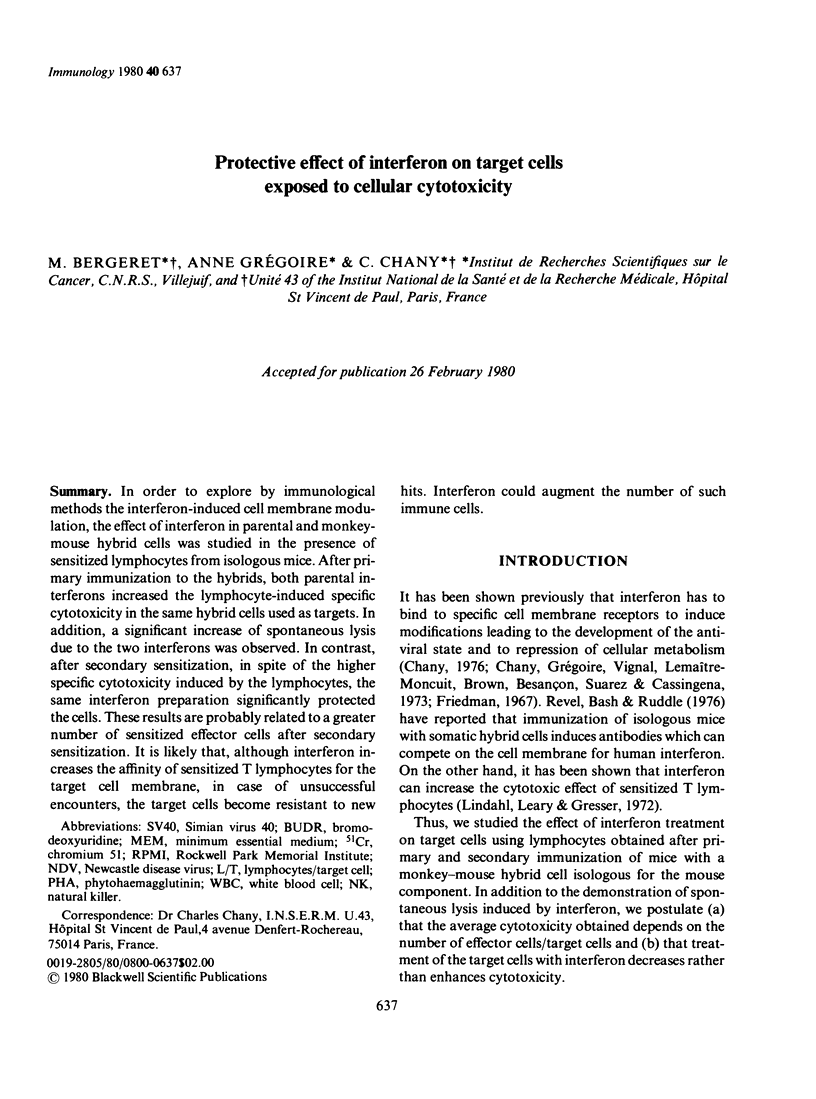
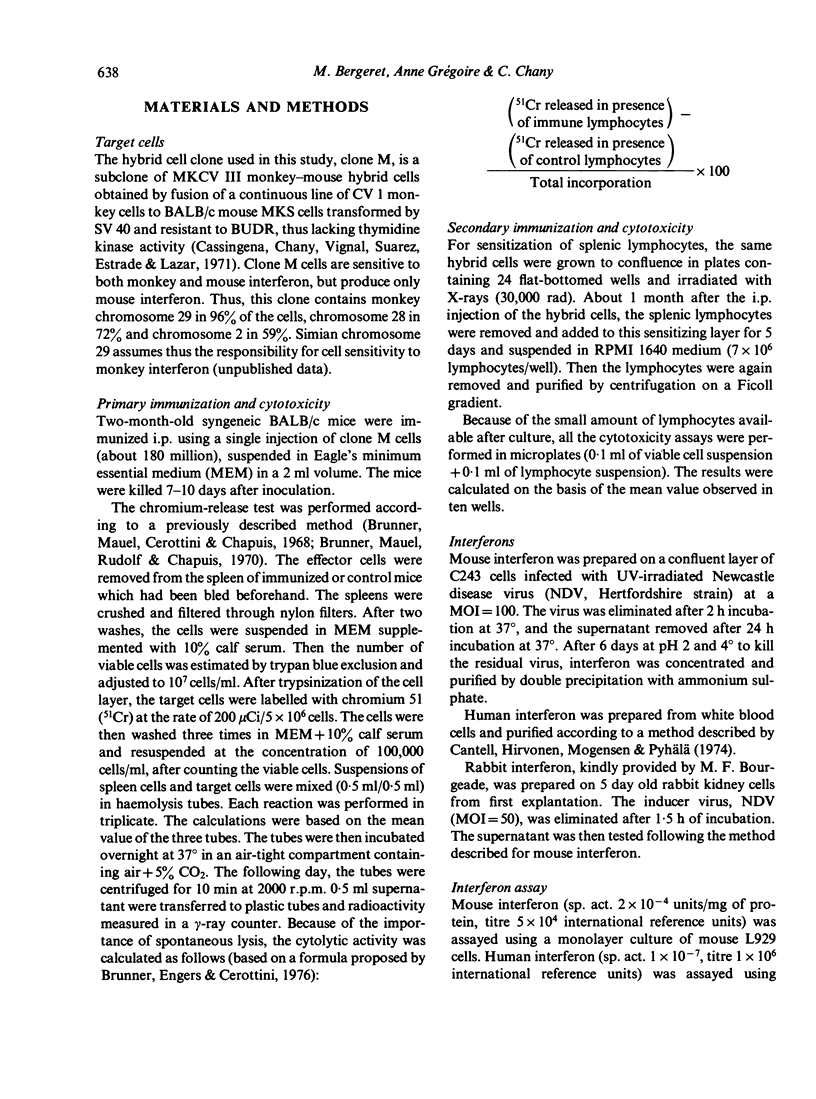
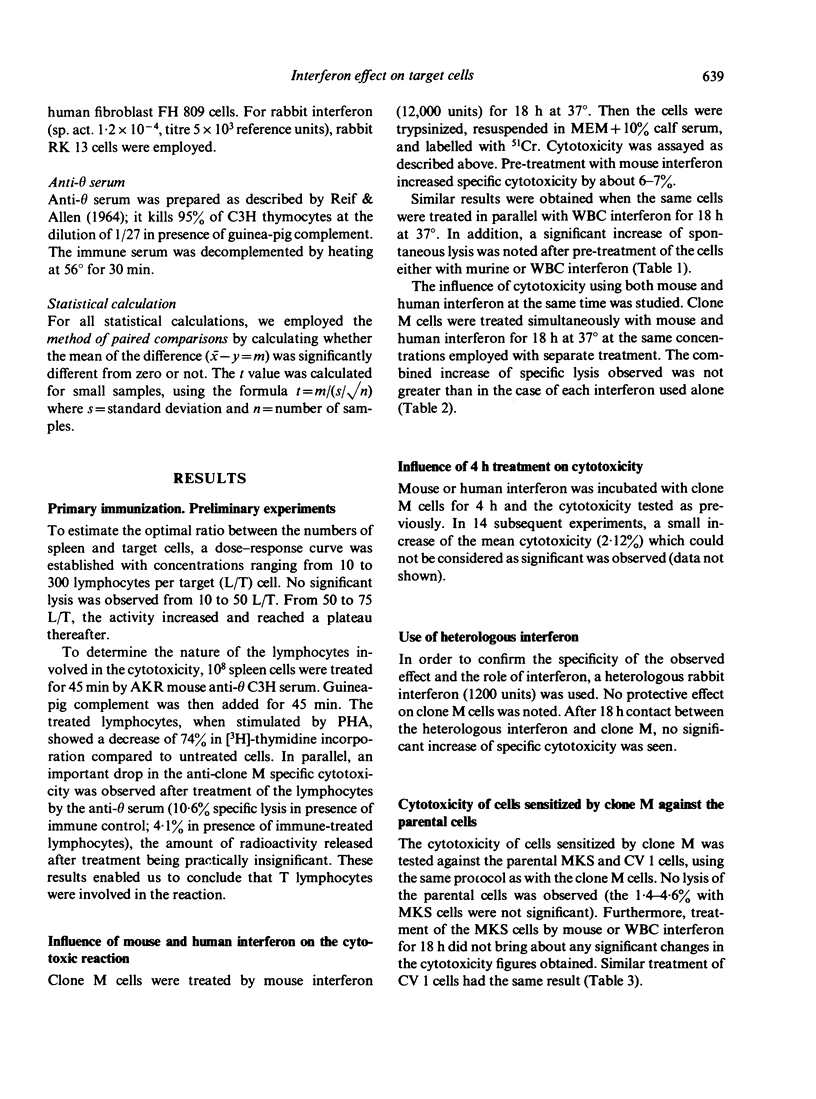
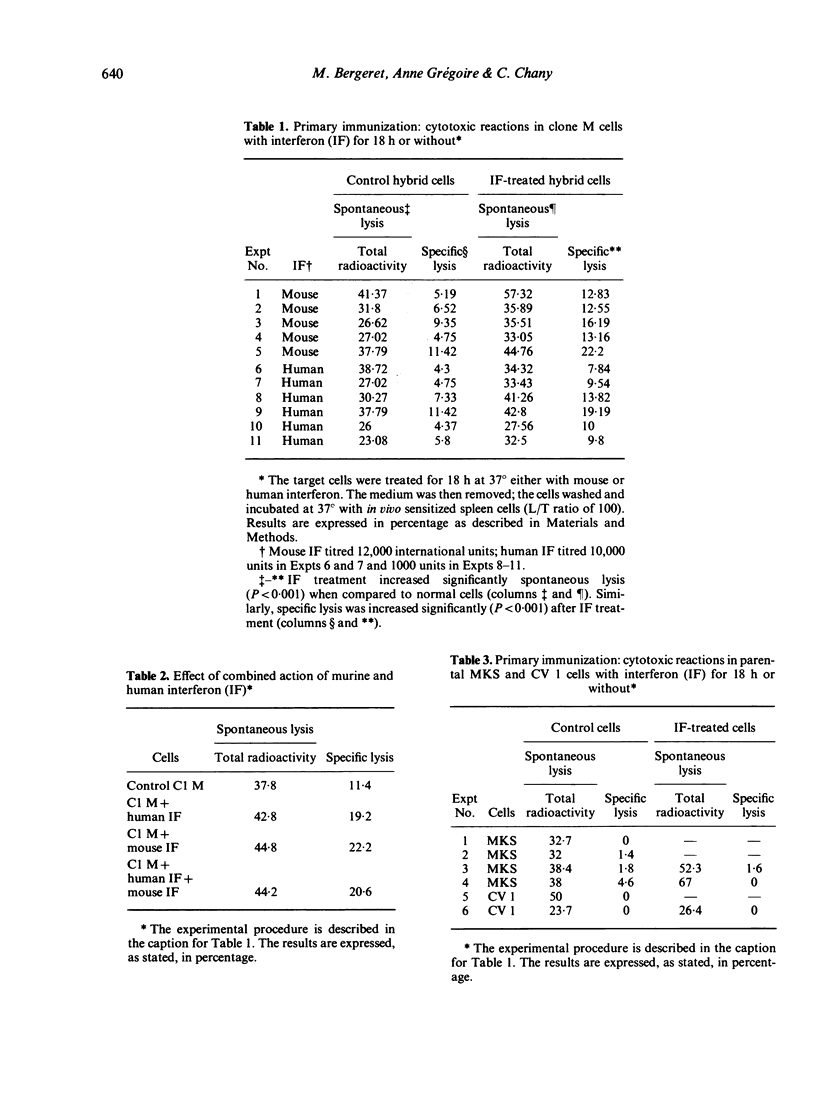
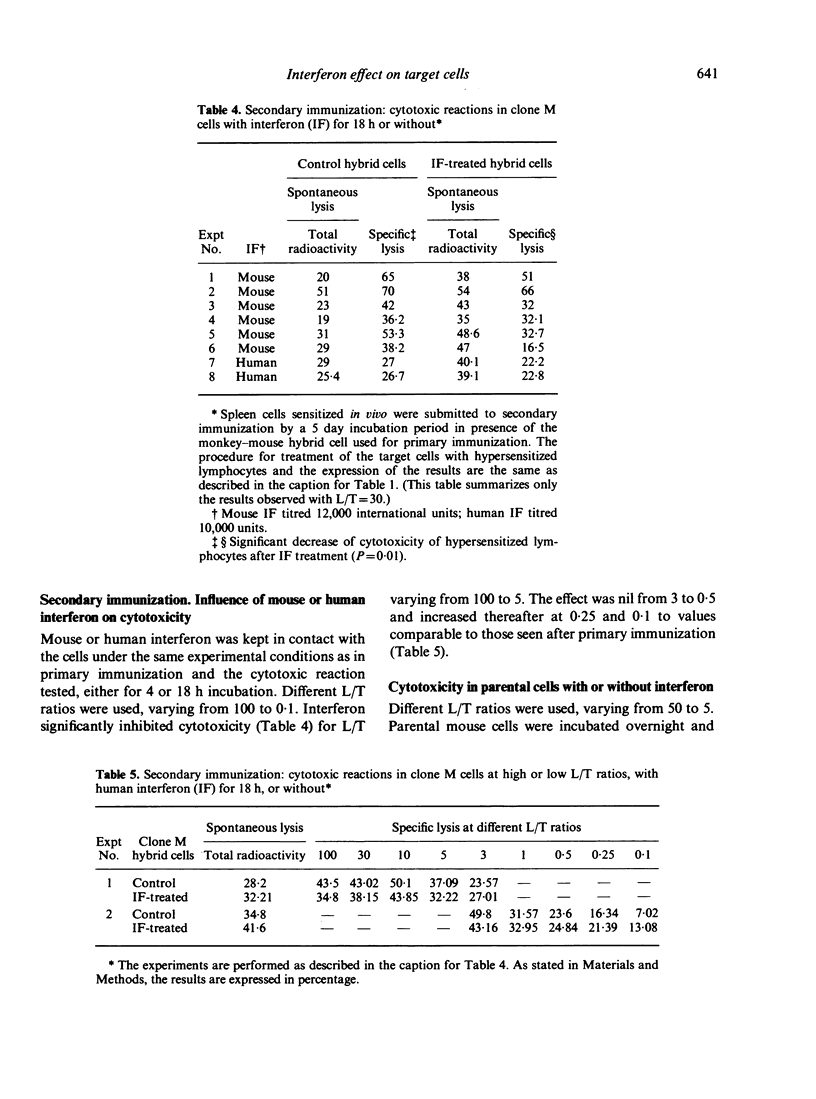

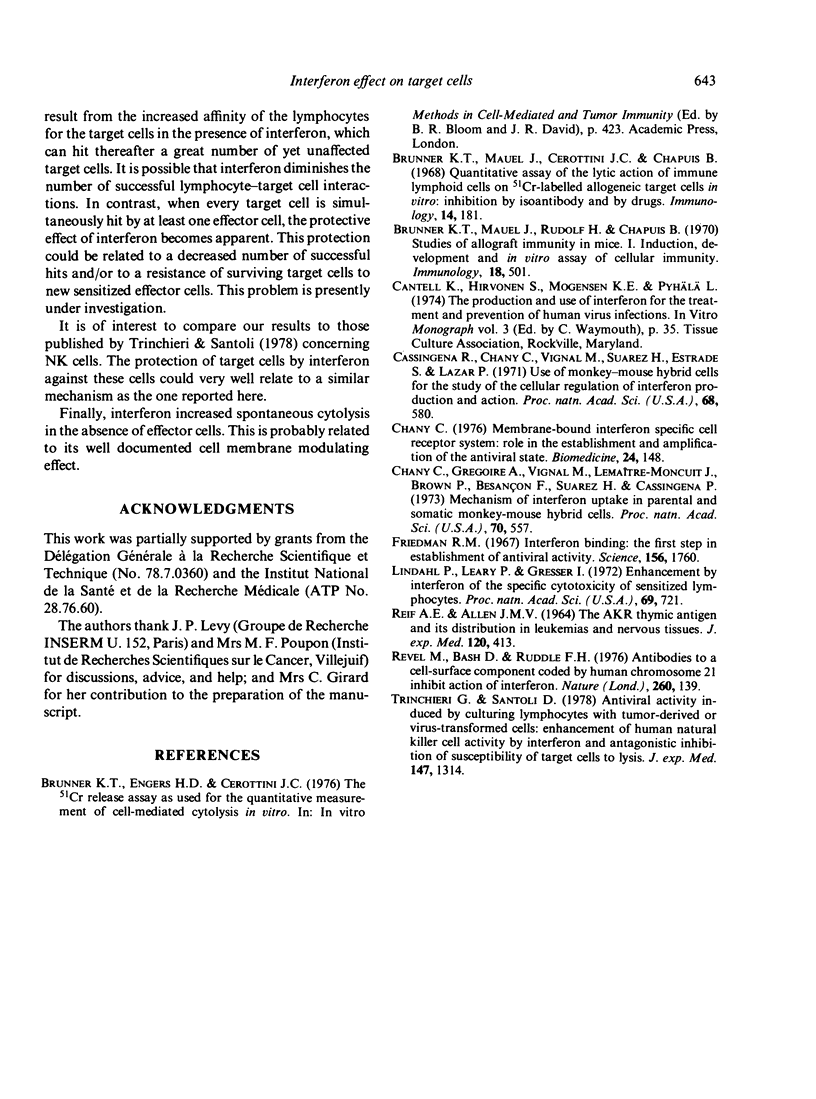
Selected References
These references are in PubMed. This may not be the complete list of references from this article.
- Brunner K. T., Mauel J., Cerottini J. C., Chapuis B. Quantitative assay of the lytic action of immune lymphoid cells on 51-Cr-labelled allogeneic target cells in vitro; inhibition by isoantibody and by drugs. Immunology. 1968 Feb;14(2):181–196. [PMC free article] [PubMed] [Google Scholar]
- Brunner K. T., Mauel J., Rudolf H., Chapuis B. Studies of allograft immunity in mice. I. Induction, development and in vitro assay of cellular immunity. Immunology. 1970 Apr;18(4):501–515. [PMC free article] [PubMed] [Google Scholar]
- Cassingena R., Chany C., Vignal M., Suarez H., Estrade S., Lazar P. Use of monkey-mouse hybrid cells for the study of the cellular regualtion of interferon production and action. Proc Natl Acad Sci U S A. 1971 Mar;68(3):580–584. doi: 10.1073/pnas.68.3.580. [DOI] [PMC free article] [PubMed] [Google Scholar]
- Chany C., Grégoire A., Vignal M., Lemaitre-Moncuit J., Brown P., Besançon F., Suarez H., Cassingena R. Mechanism of interferon uptake in parental and somatic monkey-mouse hybrid cells. Proc Natl Acad Sci U S A. 1973 Feb;70(2):557–561. doi: 10.1073/pnas.70.2.557. [DOI] [PMC free article] [PubMed] [Google Scholar]
- Chany C. Membrane-bound interferon specific cell receptor system: role in the establishment and amplification of the antiviral state. Biomedicine. 1976 Jun;24(3):148–157. [PubMed] [Google Scholar]
- Friedman R. M. Interferon binding: the first step in establishment of antiviral activity. Science. 1967 Jun 30;156(3783):1760–1761. doi: 10.1126/science.156.3783.1760. [DOI] [PubMed] [Google Scholar]
- Lindahl P., Leary P., Gresser I. Enhancement by interferon of the specific cytotoxicity of sensitized lymphocytes. Proc Natl Acad Sci U S A. 1972 Mar;69(3):721–725. doi: 10.1073/pnas.69.3.721. [DOI] [PMC free article] [PubMed] [Google Scholar]
- REIF A. E., ALLEN J. M. THE AKR THYMIC ANTIGEN AND ITS DISTRIBUTION IN LEUKEMIAS AND NERVOUS TISSUES. J Exp Med. 1964 Sep 1;120:413–433. doi: 10.1084/jem.120.3.413. [DOI] [PMC free article] [PubMed] [Google Scholar]
- Revel M., Bash D., Ruddle F. H. Antibodies to a cell-surface component coded by human chromosome 21 inhibit action of interferon. Nature. 1976 Mar 11;260(5547):139–141. doi: 10.1038/260139a0. [DOI] [PubMed] [Google Scholar]
- Trinchieri G., Santoli D. Anti-viral activity induced by culturing lymphocytes with tumor-derived or virus-transformed cells. Enhancement of human natural killer cell activity by interferon and antagonistic inhibition of susceptibility of target cells to lysis. J Exp Med. 1978 May 1;147(5):1314–1333. doi: 10.1084/jem.147.5.1314. [DOI] [PMC free article] [PubMed] [Google Scholar]


